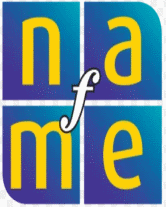Objectives
- Students will sing all phrases of a song with good breath control and with accurate pitch and rhythm.
Materials
- "Over My Head," in Share the Music, Grade 5 (New York: Macmillan/McGraw-Hill, 1995), or any song demanding relatively long, sustained phrases, such as "Follow the Drinkin' Gourd," in The Music Connection, Grade 3 (Parsippany, NJ: Silver Burdett Ginn, 1995), Share the Music, Grade 6, or Music and You, Grades 5 and 8 (New York: Macmillan/McGraw-Hill, 1991); "Scarborough Fair," in The Music Connection, Grade 6, Share the Music, Grade 6, Music and You, Grade 6, or World of Music, Grade 6 (Parsippany, NJ: Silver Burdett Ginn, 1991); or "Shenandoah," in The Music Connection,Grade 8, Share the Music, Grade 6, Music and You, Grade 5, or World of Music, Grade 8
- Audiocassette recorder with microphone and blank tape (optional)
Prior Knowledge and Experiences
- Students have been introduced to basic concepts of correct breathing, posture, and diction.
- Students have sung a variety of songs and have had frequent experience singing in smallgroups for the rest of the class.
- Students know by memory the words and music for the song to be used in the lesson.
Procedures
- Have students sing the song once through and evaluate theirability to sing each phrase in one breath. (If possible, record theirsinging of the song.) Tell them that they are going to have an opportunity to improve their singing of the song by concentrating onbreath control.
- Ask students to stand with shoulders down and heads straight, withhands on their lower ribs. Have them bend over and pant to feel themuscles that support breathing. (With this age group, it may be bestto avoid using the word "diaphragm.") Explain that those musclescontrol inhaling and exhaling and that breathing for singing needs tobe much deeper than for speaking in order to support the singingtone. Have students stand straight and, while lightly touching theirlower ribs with their hands, inhale silently and without moving; to acount of five, ask them to relax their throats so that they feel a spacein the back of the mouth, almost as if yawning. Then, ask them toinhale as if sipping juice through a straw and filling an inner tubearound the waist.
- Have students sing the song again, taking the time before eachphrase for the deep breath described above, as you count to four.Repeat the song, asking students to take in just as much air beforeeach phrase but to only a count of two.
- Have students sing the song one more time. This time, ask them tobreathe in for just one count. Have them reevaluate their ability tosing the long phrases well, now that they are breathing deeply andcorrectly controlling their breath during each phrase. If necessary,repeat the above steps.
- Ask students to sing the song again, having them raise a hand eachtime they take a breath so that you can assess whether they are ableto sing each phrase in one breath.
- Have the class establish criteria for judging an accurate performanceof the song (that is, with correct pitches and rhythms). Then, havestudents practice the song in small (3-5) groups, working for pitchand rhythm accuracy, as well as for good breath control. Withinthese groups, have students make suggestions for improvement oftheir singing.
- Ask students to sing the song all together once more and to evaluatetheir performance. (If possible, record their singing and have themcompare it to a recording of their singing of the song at the beginning of class.)
Indicators of Success
- Students identify their ability to sing long phrases well and recognizethe value of deep breathing and breath control.
- Students increase their ability to sing the song with accurate pitchand rhythm and positively assess their performance.
Extension Activities
- Have volunteers briefly recount their experience in the class and howthey feel that correct breathing helped them sing the song better.
- Have students apply the principles emphasized in this lesson tosinging other songs. Emphasize the importance of well-formed vowelsound in increasing pitch accuracy and blend in group singing.
Standards Correlations
Standard 1a
Singing, alone and with others, a varied repertoire of music: Students sing accurately and with good breath control throughout their singing ranges, alone and in small and large ensembles.
Excerpted from Strategies for Teaching Middle-Level General Music.

| Provided in partnership with NAfME |



